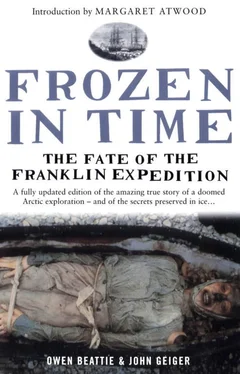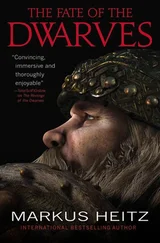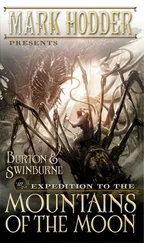In Baffin’s Bay where the whale-fish blow,
The fate of Franklin no man may know.
The fate of Franklin no tongue can tell,
Lord Franklin along with his sailors do dwell.
And now my burden it gives me pain,
For my long lost Franklin I’d cross the main.
Ten thousand pounds I would freely give,
To say on earth that my Franklin lives.
With the help of a public appeal for funds and a donation of supplies by the Admiralty, Lady Franklin purchased a steam yacht, the Fox, and placed command with the Arctic veteran Captain Francis Leopold M’Clintock, a Royal Navy officer who had been involved in three earlier Franklin search expeditions, beginning with that of James Clark Ross’s attempt in 1848–49. M’Clintock chose Lieutenant William Robert Hobson, son of the first governor of New Zealand, as his second-in-command. The Fox sailed from Aberdeen, Scotland, on 1 July 1857.
Almost immediately, problems hampered the search and the Fox was forced to spend its first winter trapped in ice in Baffin Bay, before being freed in the spring. By August 1858 the Fox had reached Beechey Island, where, at the site of Franklin’s first winter quarters, M’Clintock erected a monument on behalf of Lady Franklin. The monument, dated 1855, read in part:
To the memory of Franklin, Crozier, Fitzjames and all their gallant brother officers and faithful companions who have suffered and perished in the cause of science and the service of their country this tablet is erected near the spot where they passed their first Arctic winter, and whence they issued forth, to conquer difficulties or to die. It commemorates the grief of their admiring countrymen and friends, and the anguish, subdued by faith, of her who has lost, in the heroic leader of the expedition, the most devoted and affectionate of husbands.
By the end of September the searchers had travelled to the eastern entrance to Bellot Strait, where they established a second winter base. From there, M’Clintock and Hobson were able to leave their ship in small parties and travel overland to King William Island, early in April 1859. The two groups then split up, with M’Clintock ordering Hobson to scour the west coast of the island for clues while he travelled down the island’s east coast to the estuary of the Back River, before returning via the island’s west coast.
On 20 April, M’Clintock encountered two Inuit families. He traded for Franklin relics in their possession and, upon questioning them, discovered that two ships had been seen but that one sank in deep water. The other was forced onto shore by the ice. On board they found the body of a very large man with “long teeth.” They said that the “white people went away to the ‘large river,’ taking a boat or boats with them, and that in the following winter their bones were found there.” Later, M’Clintock met up with a group of thirty to forty Inuit who inhabited a snow village on King William Island. He purchased silver plate bearing the crests or initials of Franklin, Crozier and two other officers. One woman said “many of the white men dropped by the way as they went to the Great River; that some were buried and some were not.”
The Fox , trapped in Baffin Bay in 1857–58.
M’Clintock reached the mainland and continued southward to Montreal Island, where a few relics, including a piece of a preserved meat tin, two pieces of iron hoop and other scraps of metal, were found. The sledge party then turned back to King William Island, where they searched along its southern, then western coasts. Ghastly secrets awaited both M’Clintock and Hobson as they trudged over the snow-covered land.
Shortly after midnight on 24 May 1859, a human skeleton in the uniform of a steward from the lost expedition was found on a gravel ridge near the mouth of Peffer River on the island’s southern shore. M’Clintock recorded the tragic scene in his journal:
This poor man seems to have selected the bare ridge top, as affording the least tiresome walking, and to have fallen upon his face in the position in which we found him. It was a melancholy truth that the old woman spoke when she said, “they fell down and died as they walked along.”
M’Clintock believed the man had fallen asleep in this position and that his “last moments were undisturbed by suffering.”
Alongside the bleached skeleton lay a “a small clothes-brush near, and a horn pocket-comb, in which a few light-brown hairs still remained.” There was also a notebook, which belonged to Harry Peglar, captain of the foretop on the Terror. The notebook contained the handwriting of two individuals, Peglar and an unknown second. In the hand of Peglar was a song lyric, dated 21 April 1847, which begins: “The C the C the open C it grew so fresh the Ever free.” A mystery, however, surrounds the other papers, written in the hand of the unknown and referring to the disaster. Most of the words in the messages were spelled backwards and ended with capital letters, as if the end were the beginning. One sheet of paper had a crude drawing of an eye, with the words “lid Bay” underneath. When corrected, another message reads: “Oh Death whare is thy sting, the grave at Comfort Cove for who has any douat how… the dyer sad…” On the other side of that paper, words were written in a circle, and inside the circle was the passage, “the terror camp clear.” This has been interpreted as a place name, a reference to a temporary encampment made by the Franklin expedition—possibly the encampment at Beechey Island. Another paper, written in the same hand, also spelled backwards, includes this passage: “Has we have got some very hard ground to heave… we shall want some grog to wet houer… issel… all my art Tom for I do think… time… I cloze should lay and… the 21st night a gread.” The “21st night” could be 21 April 1848, the eve of the desertion of the Erebus and Terror —a possibility raised because of another discovery. The most important artefact of the Franklin searches had been located three weeks before the skeleton was found, as Hobson surveyed the northwest coast of the island. On 5 May, the only written record of the Franklin expedition—chronicling some of the events after the desertion of the ships and consisting of two brief notes scrawled on a single piece of naval record paper—was found in a cairn near Victory Point. The first, signed by Lieutenant Graham Gore, outlined the progress of the expedition to May 1847:
28 of May 1847. HM Ships Erebus and Terror… Wintered in the Ice in Lat. 70° 05’ N. Long. 98° 23’ w. Having wintered in 1846–7 at Beechey Island in Lat. 74° 43’ 28”N Long. 90° 39’ 15” w after having ascended Wellington Channel to Lat. 77°—and returned by the west side of Cornwallis Island. Sir John Franklin commanding the Expedition. All well. Party consisting of 2 officers and 6 Men left the Ships on Monday 24th. May 1847. Gm. Gore, Lieut. Chas. F. Des Voeux, mate.
Lieutenant Hobson and his men opening the cairn—near Victory Point, King William Island—that contained the only written record of the Franklin expedition’s fate.
The document is notable for an inexplicable error in a date—the expedition had wintered at Beechey Island in 1845–46, not 1846–47—and its unequivocal proclamation: “All well.” Originally deposited in a metal canister under a stone cairn, the note was retrieved eleven months later and additional text then scribbled around its margins. It was this note that in its simplicity told of the disastrous conclusion to 129 lives:
(25th April) 1848—HM’s Ships Terror and Erebus were deserted on the 22nd April, 5 leagues NNW of this, having been beset since 12th Septr. 1846. The Officers and Crews, consisting of 105 souls, under the command of Captain F.R.M. Crozier landed here—in Lat. 69° 37’ 42” Long. 98° 41’. This paper was found by Lt. Irving under the cairn supposed to have been built by Sir James Ross in 1831, 4 miles to the Northward, where it had been deposited by the late Commander Gore in June 1847. Sir James Ross’ pillar has not however been found, and the paper has been transferred to this position which is that in which Sir J Ross’ pillar was erected—Sir John Franklin died on 11th of June 1847 and the total loss by deaths in the Expedition has been to this date 9 Officers and 15 Men.
Читать дальше










